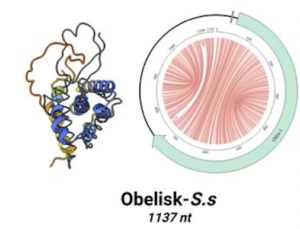Dr. Perlmutter contends that many forms of cognitive dysfunction including Alzheimer’s Disease are largely preventable through dietary changes. Pointing to findings from the massive Rotterdam study—an ongoing survey of age-associated diseases in nearly 11,000 citizens of the Dutch city—he noted that people with impaired glucose tolerance in their mid-50s had double the risk of developing Alzheimer’s later in life.
He pointed out that there is a significant correlation between hemoglobin A1c and loss of actual brain volume. “You lose 0.250% of brain volume annually even at a HbA1c of 5. In the range of 5.9 to 9.0, you’re losing 0.5% of your brain volume every year!”
The APOe4 allele, widely recognized as a predictive factor for development of Alzheimer’s is not as dramatic a risk factor as the A1C changes in terms of brain volume change, said Dr. Perlmutter, whose new book, Grain Brain, will be published this Fall.
AGEs and Aging
One of the main culprits in the development of cognitive problems is the accumulation of advanced glycation endproducts (AGEs), the pernicious process through which sugars bind to proteins. Not only does the process dramatically increase in free radical production, it also causes structural distortions in proteins that can ultimately lead to functional abnormalities.
Formation of AGEs correlates directly with blood sugar levels: the higher the blood glucose, the more AGEs are generated. Two years ago, Yaffe and colleagues at the University of California, San Francisco showed that high peripheral AGE levels correlated with cognitive decline in older adults. This was true for those with and without diabetes (Yaffe K, et al. Neurology. 2011; 77(14): 1351-6).
Dr. Perlmutter strongly recommends measuring AGEs, though he emphasized that they are much more than markers of blood sugar elevation. In and of themselves, they induce inflammatory cytokine production, increase oxidative stress, and cause mitochondrial dysfunction in tissues throughout the body.
This ultimately results in a dangerous feed-forward cycle: mitochondrial failure leads to further insulin resistance and further elevations of blood glucose, which in turn increases the production of AGEs.
In people already developing early signs of Alzheimer’s, the need to focus on AGEs is even more pressing. “Amyloid is a protein. It can be oxidized or non-oxidized,” Dr. Perlmutter explained. “AGE-modulated beta-amyoid becomes more dangerous. We have to stop glycating our proteins.”
The good news is that production of AGEs is largely modifiable through diet and lifestyle changes. “We can control the glycation of our proteins, our levels of insulin resistance and oxidative stress through what we choose to eat,” Dr. Perlmutter stressed. The key, he said, is to minimize high-glycemic foods—especially those produced from grains—and lowering one’s overall glycemic load as much as possible.
END







